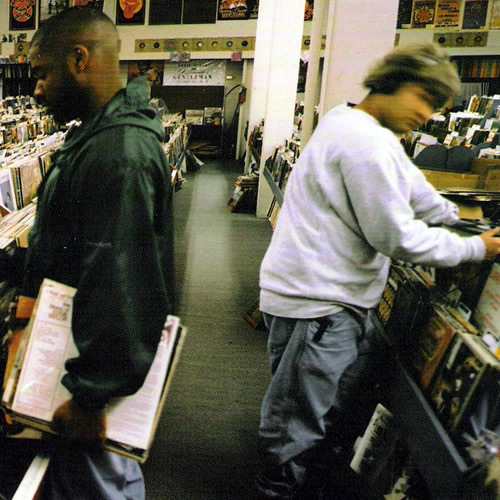Endtroducing...
Sep 16, 2015Most blogs start with an introductory post, something to describe the author and what the blog will be about. I initially sat down to write just such a post. I planned on describing how I was a programmer, the languages and frameworks I used, the projects I was working on, and how this blog would probably be about a wide variety of topics.
Come to think of it, however, the golden rule of writing is “show, don’t tell.” So it may be more effective for me to simply write on a topic I greatly enjoy. With that in mind, let us discuss one of my favorite albums:

This is the cover to Endtroducing, by DJ Shadow. It is a mostly instrumental hip-hop album featuring heavy use of sampling.
“Endtroducing” is one of those albums I feel a need to listen to all the way through. Unlike some albums, where I am comfortable starting them even if I know I won’t have time to finish, stopping “Entroducing” halfway through always feels wrong. The album has a near-perfect flow to it, with every track from “Best Foot Forward” to “What Does Your Soul Look Like (Part 1 - Blue Sky Revisit)” blending perfectly into the next.
That is not to say that this album has no distinct track boundaries. In fact, it’s quite obvious where the tracks begin and end in most cases. It’s not so much about how the album was mixed as how it was composed. The mood the album sets evolves perfectly over time, from the slightly nervousness of “Building Steam with a Grain of Salt” to the humor of “(Untitled)” to the sublime transcendence of “What Does your Soul Look Like (Part 1 - Blue Sky Revisit).
“Endtroducing” is partially great because of how grounded in reality it is. Each song captures a mood without ever feeling fake or artificial. The grain of salt in “Building Steam with a Grain of Salt” is evident in the piano riff. “(Untitled)” has a strange guitar that fits the mood of a man complementing a woman’s “eyes as big as Jolly Ranchers.” “Stem/Long Stem’s” percussion is just aggressive enough to add anger to the calm melody line without sounding disjointed. The piano in “Midnight in a Perfect World” feels like it was played in some dimly-lit jazz club.
The final song, “What Does Your Soul Look Like (Part 1 - Blue sky Revisit)”, ties the entire album together. It opens with a sample of “Nucleus” by the Alan Parsons project, then layers on mournful vocals and a smooth jazz saxophone. The drums here are just as good as they are on the rest of the album, with just enough presence to give the song energy without being distracting. The feeling it captures is hard to describe. There’s components of joy inside, but also melancholy. Some of the vocal samples even add aggression.
In the end, the album ends with a single voice saying a phrase twice:
It is happening again.
As genuine as the album feels, there’s a certain otherworldly quality to it. Each track captures a certain mood, yes, but there’s a transcendence that permeates the entire piece. Maybe it’s because the album is primarily samples of artists with dead careers, people who would have been forgotten forever if they hadn’t been sliced and dice on Shadow’s turntables. This is the album’s second strength: it’s ability to feel concrete and ethereal at the same time. It sits firmly in the realm of the experiences we remember most, those times when a situation was both frighteningly real and seemingly impossible.